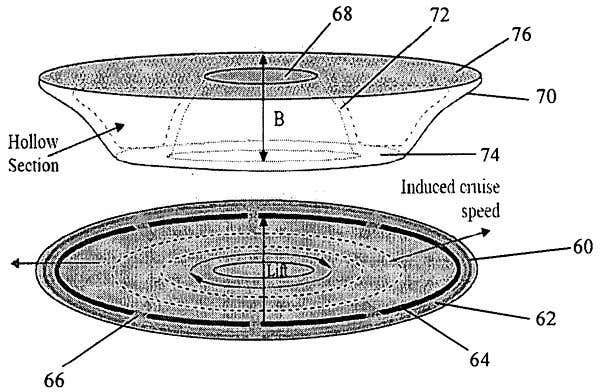NASA life support analyst Lucie Poulet explains how analog missions work and what they tell us about future crewed missions.
Get the latest international news and world events from around the world.

Simulation shows nuclear pasta 10 billion times harder to break than steel
A trio of researchers affiliated with several institutions in the U.S. and Canada has found evidence that suggests nuclear material beneath the surface of neutron stars may be the strongest material in the universe. In their paper published in the journal Physical Review Letters, M. E. Caplan, A. Schneider, and C. J. Horowitz describe their neutron star simulation and what it showed.
Prior research has shown that when stars reach a certain age, they explode and collapse into a mass of neutrons; hence the name neutron star. And because they lose their neutrinos, neutron stars become extremely densely packed. Prior research has also found evidence that suggests the surface of such stars is so dense that the material would be incredibly strong. In this new effort, the researchers report evidence suggesting that the material just below the surface is even stronger.
Astrophysicists have theorized that as a neutron star settles into its new configuration, densely packed neutrons are pushed and pulled in different ways, resulting in formation of various shapes below the surface. Many of the theorized shapes take on the names of pasta, because of the similarities. Some have been named gnocchi, for example, others spaghetti or lasagna. Caplan, Schneider and Horowitz wondered about the density of these formations—would they be denser and thus stronger even than material on the crust? To find out, they created some computer simulations.


Invention: Plasma-powered flying saucer
By Justin MullinsPass a current or magnetic field through a conducting fluid and it will generate a force. Numerous aerospace engineers have tried and failed to exploit this phenomenon, known as magnetohydrodynamics, as an exotic form of propulsion for aircraft. But perhaps attempts so far have all been too big.
A very small design could have a better chance of taking off, says Subrata Roy, an aerospace engineer at the University of Florida, Gainesville, US.
With a span of less than 15 centimetres, his aircraft qualifies as a micro air vehicle (MAV), but it has an unconventional design to say the least. It is a saucer shape covered with electrodes that ionise air to create a plasma. This plasma is then accelerated by an electric field to push air around and generate lift.
NASA’s Giant Leaps: Past and Future
Fifty years ago, humans took their first steps on the Moon. The world watched as we made history.
On July 19 at 1 p.m. EDT, we’ll salute our #Apollo50th heroes and look forward to our next giant leap.
Will you be watching? https://go.nasa.gov/327ZDZs
NASA ScienceCasts: Watch the History of our Solar System Fly
Scientists are unlocking clues about the earliest formation of our solar system from a Kuiper Belt Object known as 2014 MU69.

Why is it impossible to create more Bitcoin?
This article was originally an answer to a member of Quora, a Q&A site in which I am a cryptocurrency columnist. The reader is a “Bitcoin beginner”. If you understand the nature and purpose of a blockchain, the political leanings of Satoshi or the economics of a capped cryptocurrency, then this reviews things that you already know. But sometimes, a recap can be fun. It helps ensure that we are all on the same page…
In a previous post, we have already addressed a fundamental question:
It has nothing to do with how many individuals can own bitcoin or its useful applications. It simply means that—if widely adopted as a payment instrument or as cash itself—the number of total units is capped at 21 million. But each unit can subdivided into very tiny pieces, and we can even give the tiny pieces a new name (like femto-btc or Satoshis). It is only the originally named unit (the BTC) that is capped.
But, this article addresses a more primitive question. (Actually, it is a naïve question, but this adjective has a negative connotation, which is not intended). I interpret the question to be: What prevents me from creating, earning or being awarded an amount that brings the total circulation above 21 million BTC?
The question is a bit like asking Why there are only two solutions to a quadratic equation? — Or (a metaphor): Why can’t you own a new Picasso painting?
In the case of Picasso, it’s because we know the ownership and location of the 1,885 paintings created during his lifetime. The Old Guitarist (shown at bottom) is at the Art Institute of Chicago. Unless there has been a serious error in record keeping, there cannot be any more paintings, because he is no longer around to produce new art.
You cannot create more bitcoin than the 21 million scheduled for release because that’s all the math yields. It is the capped quantity that Satoshi wanted in circulation—because he/she sought to create a deflationary token that could never be gamed by politicians or anyone else.
Consider the alternative. The Zimbabwe dollar had no cap. When the government needed more cash, they simply printed more. (This is exactly what the US does today). Eventually, they had 4 recalls and “official” devaluations. But, of course, the value of a Zimbabwe dollar (just like a US dollar, bitcoin or a Picasso painting) is not established by edict. It floats with supply and demand.
Eventually, 100 trillion Zimbabwe dollars was worth US 16¢. Then, it collapsed completely. You can still find a few 100 trillion dollar notes on Ebay. Ironically, they cost far more than 16¢, because western collectors are fascinated by them. Just as with a Picasso painting, all value boils down to supply and demand.
Of course, no citizen of means used the local currency even before it collapsed. They simply couldn’t trust their treasury. Today, Zimbabwe uses US dollars, rands (SA), British pound and euros.
What about the US dollar? Only the most arrogant citizens believe that we control such a vast consumer market (and that we are such a huge debtor) that the world must continue to value our paper. But is this realistic? Is it sustainable? Does U.S. debt ever have to be repaid with real sweat and real products sought by creditor nations? Of course it does. The alternatives are unthinkable: We would go the way of Zimbabwe, the Roman empire—or worse. Think of the Wiemar Republic between world wars.
The US dollar has no cap. A trillion or so new dollars are printed ever year, in a series of emergency measures that transient politicians call “raising the debt ceiling”, or an “emergency requisition”, or humanitarian, infrastructure, disaster relief, military necessity, debt repayment—or whatever. This leaves us 20 trillion in debt and with no path to recovery. Our own president openly asked why we can’t just print even more money to square up with our creditors.
 With Bitcoin, we will never face that problem. Will adopting Bitcoin as legal tender interfere with a government’s ability to tax, spend or enforce tax collection? Not at all! But one day, it will decouple governments from control of their money supply. And that will be a marvelous thing—for both individuals, organizations and governments. It will force nations to balance their books—just like every household, business, NGO and municipality.
With Bitcoin, we will never face that problem. Will adopting Bitcoin as legal tender interfere with a government’s ability to tax, spend or enforce tax collection? Not at all! But one day, it will decouple governments from control of their money supply. And that will be a marvelous thing—for both individuals, organizations and governments. It will force nations to balance their books—just like every household, business, NGO and municipality.
When this happens, governments can still raise money (from taxes) and they can even borrow. But just as with an individual or corporation, they will need to find:
- Creditors (or shareholders) who truly believe in the ability to repay
- This means they are creditors that believe in a nations institutions & ethics
- And this leads to a conclusion: What better way to move our institutions and ethics in the right direction than through the accountability owned to our creditors.
Bitcoin is the embodiment of radical technology, but it is not a radical concept. It is the simple and functional embodiment of free-market economics. It addresses a market need that Aristotle fervently researched 2050 years ago, but failed to resolve. Gradual adoption is analogous to denationalization of telephony, airlines and package delivery services. Imagine the positive fallout when this occurs! Hopefully, we will around to witness a society in which governments are decoupled from monetary policy & control!
Related:
- Why is Bitcoin Capped at 21M units?
- Can Bitcoin Flourish with a Capped Supply?
- Spell it Out: What, exactly, backs Bitcoin?
- What gives Bitcoin Value?
Philip Raymond co-chairs CRYPSA, hosts the Bitcoin Event and is keynote speaker at Cryptocurrency Conferences. He is a top writer at Quora.
Fly me to the 🌙!
We’re preparing for the launch of our first #Artemis mission to the Moon. Get a preview of the launch countdown and see how NASA’s Space Launch System will send NASA’s Orion Spacecraft to lunar orbit: https://go.nasa.gov/2NH0HAA
Quantum Computing Fundamentals
The quantum computing revolution is upon us.
Establish a foundation of knowledge for understanding quantum computing with this two-course online program. Starts October 7th, 2019.

Scientists Are Hunting For A Mirror Universe And Attempting To Open Portals Into It
Imagine a world where everything is exactly the same as this one but no one knows of its existence, even though it could be staring you right in the face. These are called mirror universes — a parallel world in a different time space. While this prospect may seem a bit fetched to many, Leah Broussard believes that these parallel universes are actually very real. In fact, she, along with her colleagues at Oak Ridge National Laboratory in Tennessee, is on the hunt for a mirror universe and plans on opening portals to them.
Broussard is attempting to open a portal to a parallel universe by, what she calls “oscillation” which would eventually lead her to mirror matter. To conduct these experiments during the upcoming summer, Broussard will send a beam of subatomic particles down a 50-foot tunnel, past a powerful magnet, and into an impenetrable wall.
So what’s the point of that? Well, if the setup is just right, some of those particles will transform into mirror-image versions of themselves, allowing them to tunnel right through the wall. If it works, this would be the first proof of a mirror universe. The whole experiment will only take around a day but analyzing the data will take many weeks afterward. Either way, it won’t be long before the results are published.